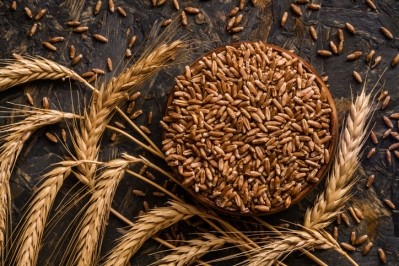Gluten-free products are still not usually nutritionally equivalent to those that contain gluten

A research team at the University of the Basque Country (UPV/EHU) has spent nine years monitoring gluten-free products to analyse whether they are nutritionally deficient. In 2014, the same team published a ground-breaking scientific paper which compared 200 gluten-free foods with their gluten-containing equivalents. This concluded that nutritionally, they were not on a par with each other. Many of the gluten-free products studied contained more unsaturated lipids (or harmful fats) than gluten-containing ones, they were lower in fibre, and their salt and protein content needed to be monitored.
The team, lead by Jonatan Miranda-Gómez, pharmacist at the UPV/EHU and researcher in the Gluten 3S research group, has continued its extensive research into gluten-free products. During the last few decades, the researchers noted, the uptake of gluten-free products has increased among consumers around the world. This is likely due to a public perception that a gluten-free diet provides health benefits, and at present, gluten-free products are also widely used by people without any gluten-related disorders. This misconception may be counterproductive, however, warned the researchers.
Analysing nutritional progress of gluten-free foods since 2014
The team compared the nutritional information of the gluten-free products from 2014 with those currently available in 2022. At the same time, the nutritional compositions of 104 gluten-free products currently marketed in Spain were assessed and compared with their gluten-containing counterparts.
The comparison of gluten-free products in 2013 and 2022 showed nutritional differences in the groups of cookies, breakfast cereals, doughs/puff pastries/pizzas, and breads.
The cookies group presented a significant decrease in the amounts of protein. Breakfast cereals and breads showed a significant reduction in saturated lipids over time. However, in the case of breakfast cereals, this alteration was just a tendency and for breads, the effect size was not high enough, which greatly restricted its extrapolation. By contrast, the doughs/puff pastries/ pizzas group displayed a significant rise and a large effect on the content of dietary fibre.
Compared to the 2013 data, the pasta group stood out most favourably from the rest. Energy (−1.1%), protein (−7.2%), simple carbohydrates (−7.5%), saturated lipids (−44.1%), dietary fibre (−23.5%), and salt (−81.6%) contents decreased significantly. Why? Gluten-free pasta is not made from wheat, because it contains gluten, but from maize. Maize flour has in fact always been the main ingredient. This has not changed in the last nine years. However, whereas in the past the second most important ingredient was rice flour, today the most common ingredient is millet. “This has had a positive effect on nutrition,” said Miranda. “To produce pasta, you have to extrude it, and millet allows extrusion to be carried out using fewer lipids.” In addition, food legislation initiatives have contributed, as changes in recent years have led to changes in pasta ingredients.
In the case of non-solid products, producers resort to other strategies. One example is beer. In this case, instead of the gluten being replaced, it is broken down by the addition of enzymes during the clarification process (when suspended particles are separated from the liquid). “But this process has another limitation,” added Miranda. “Harmful molecules may go unnoticed during routine analysis. Members of the Coeliac Association sometimes tell us that gluten-free beer disagrees with them. So a new line of research has been opened to analyse the problems of these beers.”
The issue is a big one, stressed the researcher. “In recent years, articles have shown that other molecules may also be harmful and that, even if a strict gluten-free diet is followed, these gluten-free products can still cause discomfort.”
The researchers added that reviewing the nutritional composition of gluten-free foods periodically is highly relevant since these products, which are in great demand, undergo constant changes in their composition with the aim of improving their nutritional quality.
“Despite improvements in the formulation of gluten-free products in recent years, their macronutrient profile suggested they contained marked differences and cannot be considered nutritionally equivalent when compared with their gluten-containing counterparts,” they wrote. “Therefore, it is strongly recommended that food companies continue with the reformulation of these products in order to increase their nutritional quality, adapt to market demands, and accordingly provide balanced nutrition to those patients with celiac disease.”
Reference
Gluten-Free Products: Do We Need to Update Our Knowledge?
Foods
DOI 10.3390/foods11233839














